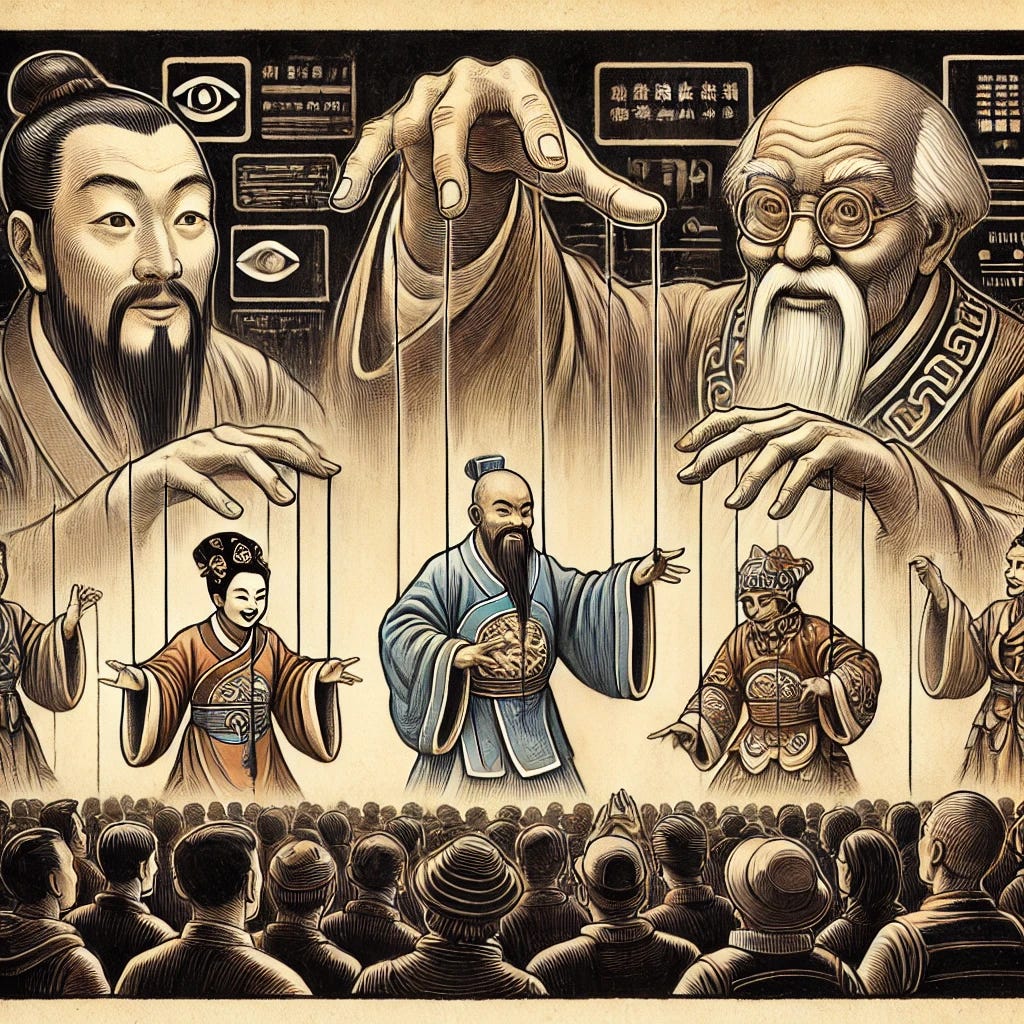QUICKLOOK: Cyber Ancients: Digital Nostalgia as a Tool for Nationalism
How AI-Generated Historical Figures Reinforce Cultural Identity and State Narratives in China
BLUF (Bottom Line Up Front)
The ‘Cyber Ancients’ trend, in which AI-generated personas of historical Chinese figures engage with modern social media, is not just a cultural phenomenon—it is a subtle tool for reinforcing national identity. The trend aligns with broader state narratives of cultural continuity, national unity, and soft power projection by presenting historical icons like Li Bai and Su Shi as active digital participants. While fostering historical appreciation, this movement also raises concerns about narrative control, historical distortion, and the potential for digital propaganda.
Abstract
The digital revival of historical figures on platforms like RedNote and Douyin allows Chinese youth to "interact" with AI-generated versions of ancient poets and thinkers. This fosters engagement with traditional culture and serves as a mechanism for reinforcing national pride and ideological alignment. By integrating historical figures into contemporary discourse, the trend subtly promotes Confucian ideals, cultural nationalism, and state-approved narratives.
This movement aligns with China's broader efforts to counter Western digital influence and assert cultural sovereignty. Embedding patriotic sentiment in historical nostalgia, the 'Cyber Ancients' trend operates as soft power, ensuring that China's cultural heritage remains central to modern digital identity. However, concerns regarding content authenticity, legal oversight, and potential censorship suggest that this trend is not purely organic but may be influenced by broader political objectives.
State Sponsored Messaging
‘Cyber ancients’ reshape China’s digital cultural renaissance
Assessment and Analysis
The Digital Revival of History as a Nationalist Tool
Presenting historical figures integrated into modern society reinforces an unbroken cultural lineage supporting national unity.
AI-generated figures commenting on modern events and engaging digitally create the illusion of historical figures "endorsing" modern China.
This cultural continuity aligns with China's soft power strategy, emphasizing an uninterrupted and superior historical civilization.
The framing subtly discourages external cultural influences by positioning China's past as a timeless, self-sufficient identity.
Historical Figures as Symbols of Ideological Alignment
Reshaping how historical figures interact with modern society ensures their legacy supports contemporary patriotic narratives.
Portraying Su Shi as a "Life Coach" emphasizes resilience and adaptability, aligning with state-promoted social stability and perseverance values.
Depicting Li Bai as a "Romantic Individualist" reinforces the idea that personal expression should remain within the framework of national culture.
"Language Cosplay" uses modern slang and AI-generated interactions to make these figures relatable, ensuring their continued relevance in China's ideological discourse.
Aligning with State-Sponsored Cultural Narratives
The Chinese government has historically used cultural figures to promote nationalism; this digital revival fits within existing strategies of cultural reinforcement.
China counters Western digital cultural trends by integrating historical figures into social media, asserting cultural sovereignty.
Emphasizing figures that align with patriotic and Confucian values while omitting controversial ones showcases selective historical representation.
State-affiliated media praise the trend, highlighting its role in making history engaging while subtly steering narratives in an approved direction.
AI as a Mechanism for Narrative Control
AI-generated historical figures ensure a controlled and state-aligned representation of the past.
Legal frameworks around AI-generated content allow authorities to regulate inaccurate or ideologically problematic portrayals.
Social media platforms hosting these AI personas operate under strict regulatory oversight, ensuring portrayals align with state-sanctioned historical narratives.
AI-generated figures present history as dynamic and relevant but within acceptable ideological frameworks, reinforcing national pride and unity.
The Risks of Historical Manipulation
Despite its appeal as a cultural engagement tool, this trend risks historical distortion by selectively curating interactions to fit modern ideological goals.
The youth, primary consumers of this trend, may absorb state-approved versions of history without questioning their authenticity, leading to soft indoctrination.
As AI-generated historical figures gain popularity, businesses may use them for nationalist branding, further blurring the lines between culture and propaganda.
Conclusion
The 'Cyber Ancients' trend extends China's cultural nationalism into the digital realm. Embedding patriotic sentiment in historical nostalgia ensures national heritage remains central to modern identity. While promoting historical appreciation, it also serves as a soft power tool aligning cultural engagement with ideological reinforcement. The movement's future as a cultural phenomenon or a controlled mechanism for shaping national identity depends on its development and the level of oversight it attracts.





